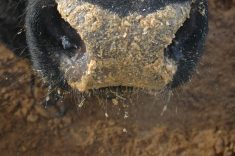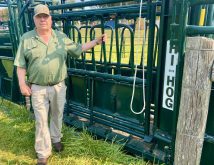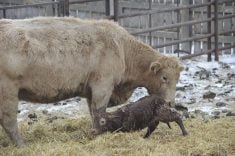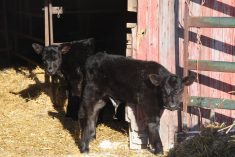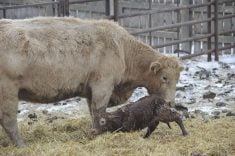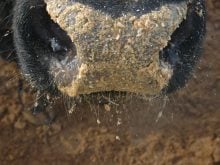Cattle like corn but should be introduced slowly to the cereal plant.
Having cattle graze standing corn during winter can provide high-energy forage, but management is key, said Bart Lardner, cow-calf and forage systems specialist at the University of Saskatchewan.
He provided several tips.
Cattle should be eased into grazing corn
Cattle unfamiliar with the crop may need time to adjust. It’s recommended to slowly transition them from the pasture to fall and winter corn grazing.
Read Also
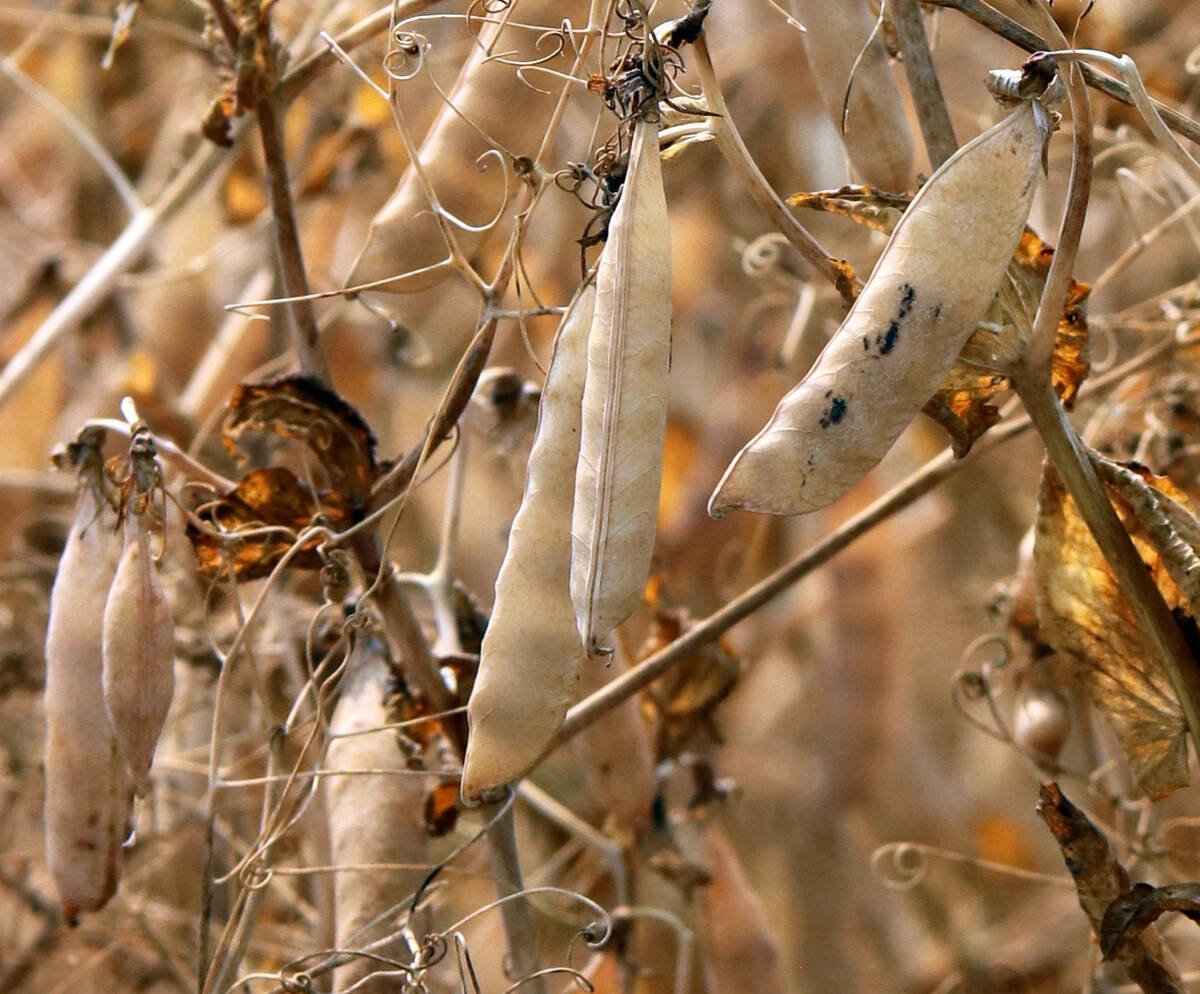
Trump’s tariffs take their toll on U.S. producers
U.S. farmers say Trump’s tariffs have been devastating for growers in that country.
“It’s a system that your animals have to be comfortable with it, used to it, adapted to it, and so does the producer,” said Lardner.
Cattle are often fed in fall and winter months and aren’t expected to graze.
“All of a sudden, this system where we’re grazing the forage out in the field, in the fall or winter, we’re asking the animals to go from point A to point B, and then actually do the grazing themselves.”
Cattle don’t make an easy transition from dry lot to corn grazing.
“That change has to be one where everybody is convinced that this system is going to work for you because it is a system that you need to do some planning for,” he said.
Lardner recommends that producers limit cattle’s access to field corn.
“I always give them two or three rows and I also have supplemental hay; round bale hay over to the side so that they can have a couple of choices,” he said.
It won’t take long for cattle to find corn palatable, nutritious and tasty compared to the supplemental hay.
He also warned producers about putting cattle into a corn crop when they are not hungry. Instead, they should be eased into eating a higher fibre diet with a lot of starch.
“Starch is a concentrate and it will reduce the pH in the rumen. If we give them too much corn, say we go from grazing dormant pasture to corn grazing, that’s a shock to the rumen microflora. And we will see drops in pH and we’ll see subacute rumen acidosis.
“So, we want to ease them into this corn crop over a seven-to 10-day period, so we can transition that rumen and the microbes,” Lardner said.
Limit cows to three to four days of feed
Cattle will often fill up on cobs, the most palatable part of the plant. This can lead to rumen acidosis.
“The first day they’re going to pick the cob structure off the plant and there’s a lot of starch in the cob. Then the second day and third day they’re going to have to back graze and utilize the leaf and the stock, the more fibrous part.
“I want to allocate them fresh grazing three to four days and it’s about half starch and half fibre. So, the starch, yes, we know it’s going to have an impact on rumen pH, but the fibre is going to mitigate that. It’s going to buffer that drop. So, I want to see a blend of that over that three- to four-day period,” he said.
“I always suggest three to four days of fresh grazing allocation, then we move it again for another three or four days. When it gets 40 below, then I just ramp up that. I go to maybe one day. I’ll move the fence every one or two days, not four days.
“I want to make sure I’ve got adequate energy and protein density of the new fresh forage in front of those cows. Why? Because energy requirements increase significantly when it drops below that -10 to that -40. So that’s our limiting nutrient in our winter grazing programs here, is energy,” he said.
Protect cattle from the elements
Cattle will graze all winter if they have access to water or loose snow and shelter. They may have more access to standing corn with heavy snow compared to swathed crops under snow.
Lardner said producers should prepare for windchill protection because energy requirements significantly increase.
“When we get that – 30 and that 15-kilometre wind, we want to make sure there’s good block from the wind or good portable windbreaks on skids where we can move them around the field where the cattle are grazing.
“The other thing, too, about the standing corn, it does do a little bit of wind protection. It does block compared to say a swath grazed program.”
Feed test
Corn often exceeds the nutrient requirements of cattle in the first two trimesters and early third trimester of pregnancy.
“Milder winters, I’ve seen cattle maintain or actually increase in body condition score grazing corn,” he said.
Lardner recommends providing a protein supplement in the two to three months before calving.
“If you’re a March or April calving herd, protein is not going to be there for her requirements. She’s going to need about 10 to 11 percent protein. The corn’s coming in about seven, eight, sometimes six percent protein,” he said.
Feed testing will determine whether additional protein should be provided. Testing for mycotoxins is also recommended.
“The rumen is an incredible buffer. It really can mitigate a lot of anti-quality things, but we don’t want to be having cattle grazing corn sitting about 500-600 p.p.b. (parts per billion) of mycotoxin, aflatoxin or something,” he said.
However, finding a representative sample of the whole plant to send to the lab can be a challenge.
Using a wood chipper or electric shears, he recommended harvesting 17.5 feet of one row of corn two or three times in the field, which represents 1/1,000 of an acre. A sub-sample of that processed biomass can be sent for lab analysis.
Have a Plan B
Lardner recommended having an alternative winter feed in case weather conditions, such as too much snow or lack of frost, put an end to corn grazing. He said some producers take the corn as silage.
“That’s not grazing it, but still you’re using it as a winter-feeding program and they’ll come in and they could maybe put that in a pile somewhere in the field or somewhere close to where the cattle are, and then just cover it and take that approach. Or maybe take them back to the pen and feed them a hay diet or something like that,” he said.
Plan ahead
Design a program around the requirements for pregnant cows, heifers or whatever you’re grazing, while capturing nutrients from manure.
“We’re actually increasing a lot of things out in that field for the subsequent crops. So, the level of nitrogen, phosphorus that’s being left behind from the urine and feces is fantastic, to the point where we won’t be having to include any additional inorganic fertility source.
“We see some guys will go corn on corn multiple years and so they really don’t have to put in a lot of that high-priced fertilizer, high-priced nitrogen, and so they’re getting the benefit of the manure nutrient nitrogen.
“Over time, it’s improving soil organic matter. Even though there’s some residue there, there’s tremendous decomposition and it’s breaking down. The residue is not a loss. It’s actually improving soil structure, soil characterization,” Lardner said.
Plant for success
It’s important to choose a corn variety to limit acidosis.
Lardner advises choosing an early-maturing variety to increase the chances of a high-yielding, high-quality crop.
An early-maturing, silage-type variety has potential in late-season grazing because the productivity is high. Taller plants help cattle eat the stand in deep snow.
“I want to plant this crop and I want it to be about half milk line in the kernel at the first killing frost. Why? Because then that’s kind of like my crop is about 50 percent starch and 50 percent fibre.
“So, I’ve got a pretty good high energy dense crop and a fair amount of fibre just to mitigate that rumen acidosis.”




